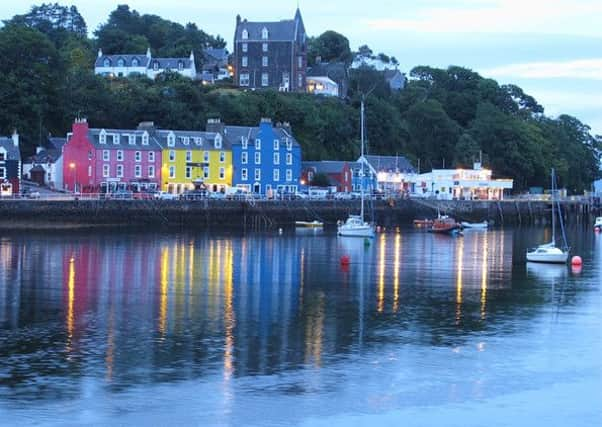Green light for Tobermory Bay treasure hunt


Torquhil Campbell’s ancestors were given exclusive rights, by Royal Charter granted by Charles 1 in 1641, to search for the gold and silver that is thought to have sunk in the bay, along with a Spanish galleon in 1588.
There have been an estimated 50-60 attempts by the Campbell family to retrieve the lost treasure over the centuries, with the latest search being the fourth bid by the present duke.
Advertisement
Hide AdA team of ten, including eight divers, from The Poop Company in Somerset, are due to arrive in Tobermory in a week’s time to undertake a two month concentrated search, which will be a seven days a week operation.
Matthew French, director of The Poop Company, revealed that the Duke, would not be the sole beneficiary if any treasure is found.
Mr French said: “We have a contract with the duke to undertake this work on his behalf, but it’s not funded by him, it’s funded by various investors. He would get the cash, but they would get a reward.
We have an agreement.”
He confirmed that he was a small investor in the project, but declined to name the other interested parties, adding: “I won’t go into the details, they are commercially confidential.”
Having searched the bay in 2008, 2009 and 2010, Mr French said they thought it was worth another go, adding:
“It’s unfinished business. We hope there is something worth recovering for the owner. The duke is quite hopeful but he knows no more than we do, There is nothing in his records to indicate anything that we don’t already know.
Advertisement
Hide Ad“Unfortunately a lot of the records were destroyed 40 odd years ago in a fire at Inveraray.”
He said information is “all over the place” but added: “It’s difficult to say what ship’s name was with absolute certainty.
Advertisement
Hide AdThere is a very common supposition that it was the Florencia, but until we get down to see for ourselves we can’t be sure.
“You have got to remember that at the time of the Armada, the Spaniards were being very secretive and they certainly didn’t admit truthfully the names of the ships coming back to Spain. You can’t always just take what one reads in the Spanish records as gospel.”
Just how much treasure might be hidden in the muddy seabed off the colourful main street of Tobermory is anybody’s guess.
Tales of a £30million fortune going down on the Florencia have been reported but remain unconfirmed, said Mr French.
But he said gold would have been carried on board the Armada ships to pay for goods and added that the Spaniards “liked their bling”and were renowned for wearing expensive gold chains around their waist and around their neck.
The operation is being carried out with the co-operation of Tobermory’s Harbour Association and the local economy is set to get an out of season boost from the diving team, who will start work mid-month, working from a barge in Tobermory Bay.
Advertisement
Hide AdThe contract is due to finish just before the start of the tourist season at Easter.
Mr French, who said the duke and the dive team were hopeful of a positive outcome, added: “I can’t remember how many attempts there have been on this wreck, I think it’s 50 or 60 over the years, dating back to the 16th century. We think it is still worth pursuing. We are looking for contact, basically the wooden structure of the wreck. Lots of people have claimed to have found the wreck, but we don’t think so.”
Advertisement
Hide AdThe divers will use an airlift system for the excavation works, which will remove the overburden of the seabed from the wreck area. Any seabed material excavated will be dumped close by on the seabed to avoid dispersion further afield.
A spokesperson for Historic Scotland said: “We commissioned an archaeological assessment of Tobermory Bay in August 2006 and did not find any firm evidence for the position and extent of survival of the wreck within the bay.
Given the degree of uncertainty, the site of the wreck does not have any statutory protection and we have not undertaken any searches since then.
“If these renewed attempts to find the wreck are successful, the discovery of 16th-century hull remains or clusters of artefacts from that period would certainly be of archaeological significance. In that event, we may wish to consider the case for statutory protection.”